
A falling population may result in fewer troops but the Republic of Korea armed forces will counterbalances with Tiger 4.0.
Although it maintains one of the most formidable military forces in East Asia, the Republic of Korea (RoK), or South Korea, continues to confront multiple domestic and international challenges in a volatile regional security environment. In recent months, doubts over the United States commitment to the vital and longstanding US-RoK military alliance have surfaced as a consequence of the withdrawal of US forces in Syria as well as the earlier cancellation or downscaling of several major joint exercises.
Complex uncertainties also surround the status and desired outcomes of dual-track negotiations between the US and the RoK with the belligerent Democratic People’s Republic of Korea (DPRK), or North Korea, amid the backdrop of regional power plays involving China, Russia, and the US, added to increasing tensions with Japan. While the armed forces primarily focus on the north, the potential also exists for a clash between South Korea and Japan despite Washington’s efforts to draw the two closer together.
In this tense and fluid condition, the RoK armed forces – which celebrated its 71st Armed Forces Day in October – must remain at high readiness to react at short notice to potential contingencies ranging from limited but violent provocations by the DPRK, to naval and air blockades, and limited strike operations against North Korea in concert with US forces.
The other end of the spectrum would lead to a general war requiring the execution of detailed war plans that have developed over decades which could potentially lead to a decapitation attack of the DPRK leadership to avert a devastating missile attack, or even a RoK-US offensive northward to disarm and occupy much or the entire DPRK without provoking China.
The armed forces have dramatically modernised and evolved since the 1990s with improved lethality and reach by first acquiring long-range precision strike and command, control, communications, computers and intelligence (C4I) capabilities from the United States, all the while actively developing a world-class domestic defence industrial base that not just addresses domestic requirements, but increasingly serves a broader global market.
Despite making significant strides in indigenous defence technology and industrial development, the country faces declining overall population numbers that are steadily eroding the available manpower pool for the armed forces. This has already resulted in force structure reductions in the large RoK Army (RoKA) deployed along the Demilitarised Zone (DMZ). In response, Seoul outlined plans in 2018 to increase investment in civilian-military dual use technologies to grow its Fourth Industrial Revolution (4IR) capabilities. The government’s 4IR plan has boosted related research and development (R&D) funding from $114 million in 2017 to around $170 million by 2020.
Other plans to multiply its fighting strength include the introduction of unmanned systems from 2024, with the army considering unmanned ground vehicles (UGVs) and micro-class unmanned aerial vehicles (UAVs), while the RoK Navy (RoKN) seeks unmanned surface and underwater (USV and UUV) platforms, while the RoK Air Force (RoKAF) is exploring unmanned reconnaissance and strike-capable UAVs.
Army modernisation
In its 2018 Defence White Paper published in January 2019, the Ministry of National Defense (MND) stated that it had already set in motion plans under the government’s ‘Defense Reform 2.0’ to progressively reduce the number of overall standing troops to 500,000 from 599,000 by 2022 in address future challenges. Another driving factor is available manpower resources in respects to South Korea’s low birth rate, which according to Korean Statistical Information Service (KOSIS) is likely to lead to a decrease in the number of eligible male conscripts in their 20s from about 350,000 in 2018 to less than 250,000 after 2022.
The MND also revealed that the number of troops belonging to the RoKA was to be reduced to about 365,000 (from 464,000 at the time), while those of the RoKN, marine corps (RoKMC), and the RoKAF would be maintained. In accordance with such demographic fluctuations, the RoKA is reportedly reducing the number of corps from eight to two by 2022, and divisions from 38 to 33 by 2025 as well as integrating commands.
To offset the expected reduction in manpower, the RoKA in 2018 launched its Army Tiger 4.0 System concept wherein each combatant receives a ‘Warrior Platform’ comprising 33 types of personal equipment, including new communications systems, field uniforms, multi-hit ballistic vests and helmets, and sights. With each soldier effectively transformed into a sensor node, the army envisions that Tiger 4.0 will eventually take the form of a hyperconnected and artificial intelligence (AI)-driven ground combat network.
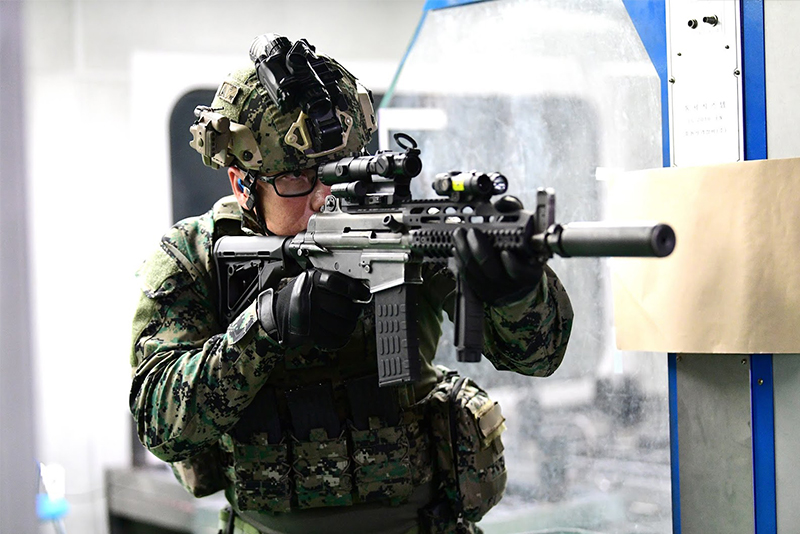
The RoKA reportedly plans to expand the Tiger 4.0 System to four battalions by 2021, four brigades by 2025, and all units by 2030. It is estimated that the effort will cost around $1 billion.
The service has also operationalised a specialised unit that will operate and develop new concepts of operation for UAVs and UGVs. The new unit – which is known locally as Dronebot Jeontudan (Warrior) – was first announced in December 2017. It has been charged with creating the necessary command and human resource infrastructure, including a new military occupational specialty, to recruit suitable candidates from within the army or from the private sector.
It will initially operate several types of mini- to tactical-class surveillance and strike-capable UAVs, with one example being the indigenously developed Striker Drone quadcopter manufactured by NES&TEC, which has a maximum take-off weight (MTOW) of 9kg (19lb) and can carry a 5kg (5.5lb) payload such as an electro-optical camera as well as a pair of small 500g (1.6lb) bombs.
Besides developing and validating new concepts of operation for unmanned and robotic systems, the Dronebot Warrior unit will also be tasked with integrating these systems into wider RoKA operations as well as providing support to other units during combat operations.
The RoKA is also growing a pre-emptive strike ability to allow it to swiftly destroy North Korea’s frontline artillery systems. Centring on a three-tier missile strike concept for the early stage of a potential armed conflict, the service will field weapons such as the Korea Tactical Surface-to-Surface Missile-I (KTSSM-I) – also known as ‘artillery killer’ – developed by the Agency for Defense Development (ADD) and defence prime Hanwha Defense. The MND said four KTSSM-I missiles can be launched almost simultaneously from a static launching platform.
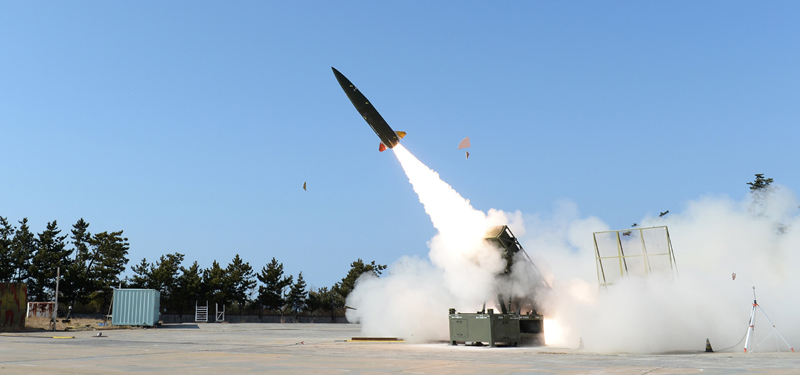
“KTSSM-I will strike the enemy’s tunnels [that shelter] the 170mm self-propelled howitzers and 240mm multiple-rocket launch systems,” the RoKA was quoted as saying by Yonhap news agency, noting also that most of these artillery systems have been deployed along the DMZ and border island coasts.
The news outlet also reported on a new missile known as the KTSSM-II, which would be used to neutralise larger and fixed facilities housing the KN-09 (KN-SS-X-09) 300mm rocket launchers and ‘Scud’-type (Hwasong-5/-6/-9) ballistic missiles.
Finally, the indigenous Hyeonmu ballistic missiles will be used to destroy the DPRK’s nuclear weapons as well as other weapons of mass destruction. The Hyeonmu-2A is understood to possess a strike range of up to 300km, the Hyeonmu-2B of up to 500km, while the latest Hyeonmu-2C can reportedly strike targets at ranges of up to 800km.
Air force rising
Years of sustained procurement for the RoKAF has resulted in an advanced air force with full-spectrum capabilities, one that possess the ability to field the latest capabilities in air defence, strike, intelligence, surveillance, and reconnaissance (ISR), and air mobility. RoKAF modernisation has likewise been primarily driven by the DPRK threat despite recent attempts by the Moon administration to engage its leadership. Ongoing and projected force modernisation initiatives that have been amply funded since 2014 look set to continue this positive trajectory.
The procurement priorities over recent years have been fifth‐generation fighters such as the Lockheed Martin F-35A Lightning II Joint Strike Fighter (JSF) and the indigenously developed Korean Fighter Experimental (KF-X), ballistic missile defence (BMD) systems such as the Patriot PAC‐3, airborne early warning and control (AEW&C) platforms, tanker aircraft, and a new integrated C4I system.
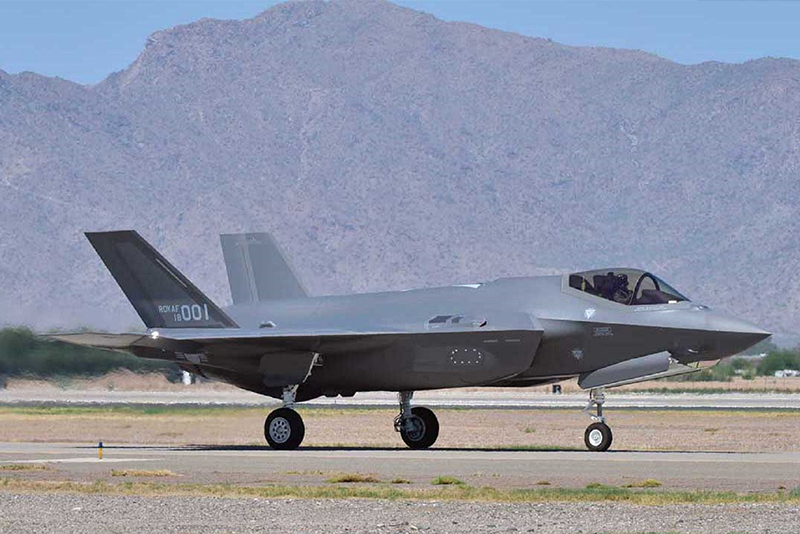
Forty F-35As had been contracted under phase three of the FX programme (F-XIII) to replace the RoKAF’s F-5E/F and KF-5E/F Tiger IIs and F-4D/E Phantoms. Eight of the new aircraft have been delivered as of November, with all 40 expected to be delivered and deployed by 2021. Seoul is also set to set to exercise its option for a further 20 aircraft under the RoKAF’s F-XII requirement
South Korea has partnered with Indonesia for the development of the KF-X programme, with the Indonesian-specific aircraft designated the IF-X. The goal of the effort is to produce an affordable fifth-generation fighter to replace the RoKAF’s KF-16s from the 2020s. Approximately 120 aircraft are expected to be acquired, although budgetary limitations may result in a reduced buy, with deliveries commencing in 2026.
Meanwhile, the service’s KF-16 fleet is also undergoing a major mid-life upgrade programme. Lockheed Martin has been contracted under a Foreign Military Sales (FMS) contract worth $1.2 billion in November 2016 to carry out these upgrades at its Fort Worth factory, with contract completion anticipated by November 2025.
The KF-16 upgrade is based on the advanced F-16V configuration, which includes Northrop Grumman’s AN/APG-83 Scalable Agile Beam Radar (SABR) and a new high-performance modular mission computer to replace the aircraft’s three original computers. Other enhancements include the second-generation Joint Helmet-Mounted Cueing System (JHMCSS II) along with upgrades to the electronic warfare suite and expanded weapons release capabilities. At least ten aircraft have reportedly been flown to the United States for upgrading work, although the service has not disclosed further information.
South Korea has also sought a persistent ISR capability by ordering four Northrop Grumman RQ-4B Block 30 (I) Global Hawk high-altitude long-endurance UAVs equipped with the Enhanced Integrated Sensor Suite (EISS). The EISS includes electro-optical/infrared (EO/IR) and synthetic aperture radar (SAR)/ground moving target indicator (GMTI) sensors, a signals intelligence (SIGINT) package, and an imagery intelligence exploitation system.
Deliveries had earlier been expected to commence by 2017 and completed by June 2019. However, South Korea’s DAPA announced in April 2018 that the United States was deferring delivery to enable additional anti-hacking and cyber-security measures to be incorporated into the UAVs.
Separately, the country is pursuing the indigenous Korean Unmanned System (KUS-FS) medium-altitude long-endurance UAV, with a prototype Korean Air’s Aerospace Division for the ADD. The KUS-FS is of the same class as the General Atomics MQ-9 Reaper and features four underwing hardpoints, a chin-mounted EO/IR sensor turret, and satellite communications. Each KUS-FS system will comprise between three to five UAVs, a ground control system, and associated ground-support equipment.
Navy modernisation
Until the mid-1980s the RoKN did not possess a true blue-water capability and was essentially a coastal defence force comprising corvettes and light frigates. However, the the service operates one of the region’s most advanced fleets, including Aegis guided-missile destroyers, air-independent propulsion (AIP)-equipped submarines, and modern amphibious assault ships.
The RoKN’s transformation can be traced to the early 2000s, when concerns emerged over the ability of the United States to maintain its position as the region’s most powerful force amid a rising China. Uncertainty over this possible power shift and concerns that Washington might reduce – or eventually withdraw completely – from the Korean peninsula and leave China as the region’s leading power led South Korean defence planners to begin prioritising the navy’s expansion in subsequent military budgets.
Blue-water capabilities emerged with the 135m long Kwanggaeto Daewang (KDX-I) class of guided-missile destroyers, the first of which was launched by DSME in June 1995 and commissioned in July 1998. The KDX-I was originally envisioned to be the RoKN’s principal air warfare destroyer. However, the programme was beset with multiple delays, and by the time the lead ship was commissioned in 1998 plans for a larger destroyer, known as the KDX-II, had already been approved. Only three KDX-I destroyers were eventually fielded.
Six KDX-II guided missile destroyers were acquired between 2003 and 2008, although an improved platform equipped with the Aegis command-and-control system including the AN/SPY-1D multifunction search radar – the Sejong Daewang (KDX-III) – entered the fleet in December 2008. This meant that South Korea has become only the fifth country to operate the Aegis combat system after Japan, Norway, Spain, and the United States.
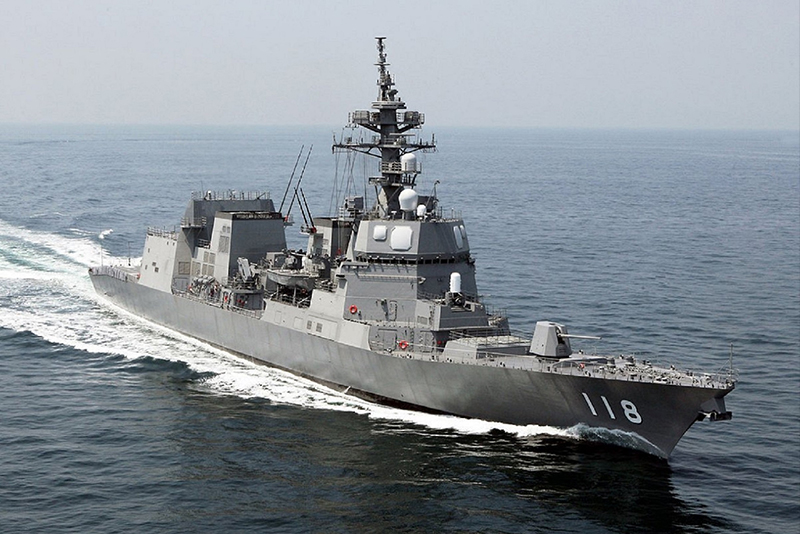
To fulfil requirements of an indigenous submarine-development capability, Seoul acquired three Type 209 diesel-electric submarines (SSKs) under the first phase of the Korean Attack Submarine (KSS-I) programme from German shipbuilder Howaldtswerke-Deutsche Werft (HDW), with the first of class built by HDW in Kiel and the remaining two assembled by Daewoo Shipbuilding and Marine Engineering (DSME) at its Okpo facility. The RoKN acquired six more locally built Type 209 SSKs, which became known as the Chang Bogo-class.
In June 2006, Hyundai Heavy Industries (HHI) launched the service’s first AIP-equipped submarine – based on the HDW Type 214 SSK design – under the KSS-II programme. Eight of these were eventually built from 2006 to 2017. The experience from this effort went on to inform the development of the next-generation KSS-III class, which will be the country’s largest and most heavily armed underwater combatants to date. A key feature of the new boats will be their six vertical launching system (VLS) tubes that can launch land-attack cruise missiles, providing the navy with a stealthy stand-off land attack capability.
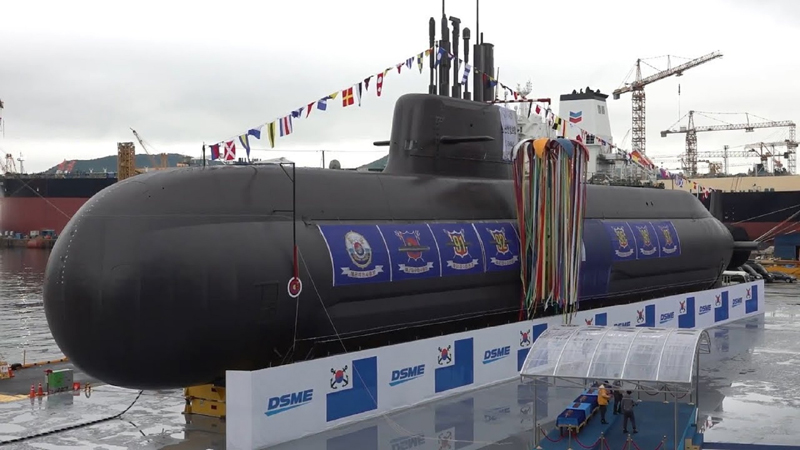
The first KSS-III SSK, Dosan Ahn Chang-ho, was launched by HHI in September 2018 and has already commenced sea trials with an expected handover to the RoKN in late 2020. Two further boats under construction, with a total of nine to be commissioned by 2029.
by JR Ng










